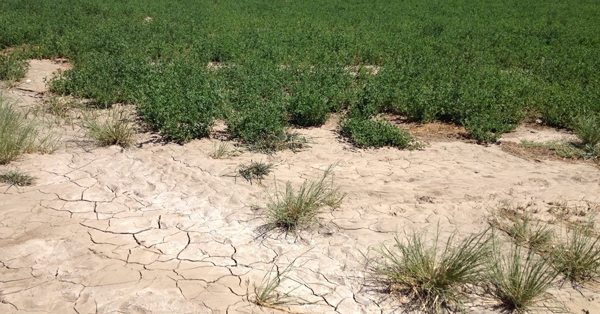California's Sacramento-San Joaquin River Delta region, commonly referred to simply as the Delta, is often described as a unique part of the world. Although it is located between two big urban centers – the greater Sacramento and San Francisco Bay areas – the Delta can feel like another world altogether.
This is something Michelle Leinfelder-Miles, a farm advisor with UC Agriculture and Natural Resources, knows well. She comes from a sixth-generation farming family in San Joaquin County and, after accepting her position several years ago, was happy to return “home” after working in far-off locations ranging from Spain to Chile to New Zealand. It turned out, however, that because her family farms on the east side of the county, when she first started working on the western side – the Delta – some farmers didn't necessarily see it that way.
“When I started meeting Delta farmers and told them where I grew up, some of them joked that the east side is a completely different world. So, it was funny that I considered myself local, but I was not local enough!” Over time, Leinfelder-Miles has come to believe they are right, noting that “the Delta and its farming truly are unique compared to any other place I have lived.”
One of the things that makes the Delta distinctive is its fertile soil, which has led to most of the land there being farmed. While the soils are rich, the Delta is also known for challenging salinity conditions that arise, in part, from tidal influences and a shallow groundwater table. In general, plants are stressed by saline conditions because they need more energy to take up water, resulting in less energy for plant growth. To add to the challenge, irrigation water coming from rivers is often salty as well because it has been used and reused by agricultural and urban interests upstream. It's kind of like trying to quench your thirst after eating too much salt, but having to do so with salty water.

Leinfelder-Miles has been studying alfalfa, a crop where the harvested product is its vegetative growth, so any extra energy that it uses to take up water in salty conditions can decrease yields. Soil salinity can be reduced by periodic leaching – meaning adding more water than the plant needs – but deciding how much excess water a crop needs in any given location can be challenging.
To answer this question for alfalfa in the Delta, Leinfelder-Miles worked cooperatively with growers to set up a series of seven field sites that she and colleagues intensively sampled over a number of years. The work was physically grueling – salinity is often modeled rather than directly sampled because it is physically intensive work. She says, “Our soil sampling consisted of about three people using hand augers to soil sample down to five feet, and then going further to collect a groundwater sample. We augered twelve holes in each of our fields, and it took us about six hours to sample a site – if all went well!”
Sometimes it didn't. “On more than one occasion, we lost a tool down a hole, and then the work took much longer. Once, we lost the end of a homemade water sampling tool down a 10-foot hole, and we tried so hard to retrieve it but finally had to give up, bury the tool, and remake it.”
While alfalfa has been getting a lot of attention as a big water user during the California drought, researchers stress that there are trade-offs involved with all crops. Alfalfa takes about the same amount of water to grow as any crop, but because it is grown year round, its overall water use can be higher. The good news is that it can also be deficit irrigated when needed. In addition, alfalfa fields provide habitat for species like Swainson's hawks that are currently declining in California.
So far, Leinfelder-Miles is intrigued by what her research is showing. She says that while growers are able to get salts out of the top foot or two of soil, they are accumulating deeper down, and at depths that still impact plant roots. This means that “growers cannot simply apply more water to leach salts deeper because, especially in drought years, water may not be available. Also, shallow groundwater appears to be preventing deeper leaching. It is therefore important to maintain high quality irrigation water to mitigate salt loading in the soil.”
“In addition,” she says “we have data that paints a picture of how salinity is building up in Delta soils and hope to develop these ‘pictures' into salinity management guidelines for growers. We also hope the data will inform state water quality objectives for the Delta.” In other words, the tough field work has been worth it.
This research was supported in part by a grant to Michelle Leinfelder-Miles from the California Institute for Water Resources in the University of California's Division of Agriculture and Natural Resources.
